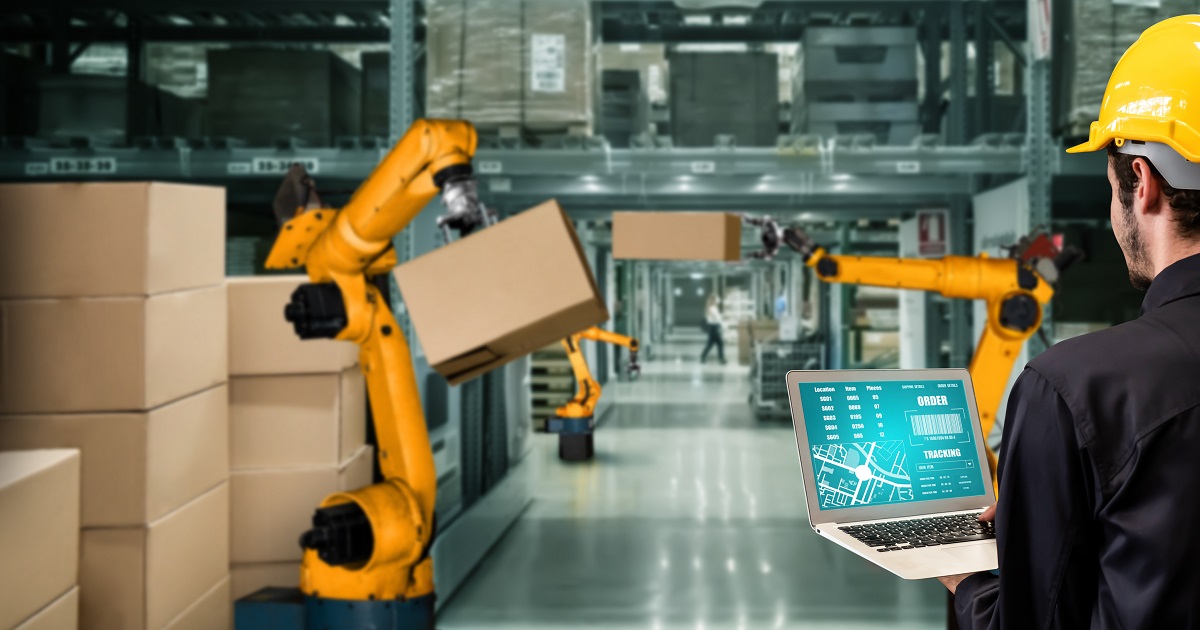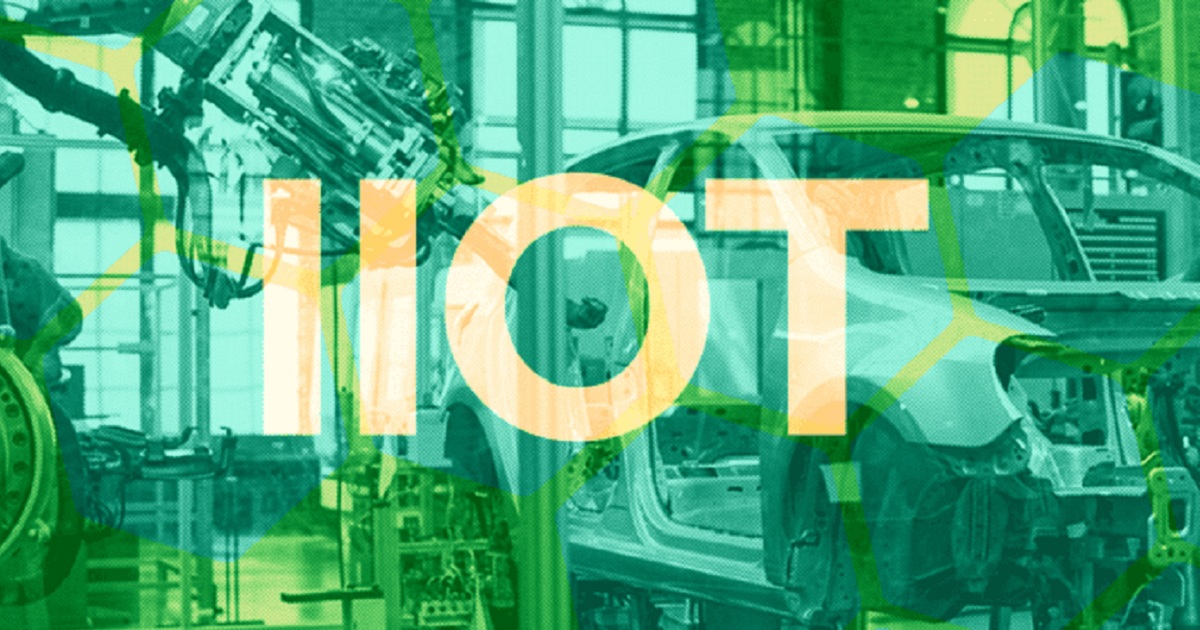
IoT Security
Article | June 28, 2023
Explore the events on IoT security, addressing to the complex cyber security challenges and privacy issues. It caters to a variety of attendees including industrialists, students and enthusiasts.
The significance of IoT security cannot be overstated in today's interconnected business landscape. Safeguarding sensitive data and mitigating risks is paramount, making robust IoT security a non-negotiable imperative for organizations seeking to thrive in the digital age.
From industry professionals seeking to expand their knowledge to builders and buyers in the market, these events provide a comprehensive platform to learn, connect, and discover the possibilities of scaling with IoT. Attendees can connect with buyers, sellers, and innovators, fostering meaningful connections and exploring potential business opportunities. At these industrial IoT conferences 2023 and beyond, attendees can immerse themselves in a vibrant atmosphere of innovation and collaboration.
1. IoT Tech Expo
September 26-27, 2023 | RAI (AMSTERDAM)
The IoT Tech Expo Europe is a prominent event that serves as a platform for exploring the latest innovations, solutions, and strategies in the field of IoT, digital twins, enterprise transformation, IoT security, and edge platforms. It promises two days of top-level content and thought leadership discussions. Industry experts, including keynote speakers and panelists, will share their unparalleled industry knowledge, real-life experiences, and insights through solo presentations, expert panel discussions, and in-depth fireside chats. Some of the key sessions will include panel discussions on staying on track with digital twins, examining their pitfalls across industries, and exploring the incorporation of other technologies like AI, ML, and Blockchain for agile processes. Notable speakers in this domain include Bruno Ávila, i-Team Director - Digital Urban Planning Lab, City of Amsterdam; Ben Lomax Thorpe, Head of Digital Twin, among others. Additionally, the event showcases success stories and case studies from organizations leading the way in digitalization and IoT implementation.
2. International Conference on the Internet of Things
November 7-10, 2023 | Nagoya (Japan)
This event brings together leading researchers, industry experts, and stakeholders in the IoT field. This conference serves as a platform for visionary and groundbreaking research, fostering innovation in various IoT verticals such as smart industry, smart cities, smart health, and smart environment. The 13th International Conference on the Internet of Things (IoT 2023) will include keynote speeches, research presentations, panel discussions, and interactive sessions. It will provide a platform for sharing visionary ideas, ground-breaking research findings, and innovative solutions in the realm of IoT and related fields. Nagoya, the host city for IoT 2023, will offer a captivating setting for the conference. With a focus on visionary research and innovation, the conference provides a platform for knowledge sharing, collaboration, and exploration of IoT advancements in various verticals.
3. 9th Annual IoT Security Foundation Conference
November 7, 2023 | IET (London)
The 9th Annual IoT Security Foundation Conference is a highly regarded event dedicated to IoT cybersecurity. With the increasing prominence of artificial intelligence in various industries, this year's conference will focus on the impact of AI on cybersecurity, exploring its implications for developers and cyber defenders at the forefront of the field. The call for presentations is currently open, inviting submissions on a wide range of IoT security-related themes till July 14th, 2023, with notifications of acceptance to be sent by August 18th, 2023. By participating in the IoTSF 2023 Conference, sponsors and exhibitors gain exposure within the IoT security community and can forge new customer relationships, generate leads, establish partnerships, and strengthen existing customer connections. The conference will cover a range of themes, including business, technical, operational, educational, and policy-related topics. Proposals are invited on these subjects, offering speakers an opportunity to contribute to the diverse interests of conference attendees.
4. ETSI IoT Conference 2023 (ETSI IoT Week 2023)
July 4-6, 2023 | Sophia Antipolis (France)
ETSI, the European Telecommunications Standards Institute, is organizing its annual flagship event, the ETSI IoT Conference. The conference, ' IoT Technologies for Green and Digital Transformation,' is a must-attend event for professionals involved in the Internet of Things, recognizing the significance of standard-enabled technologies for IoT service deployments. It provides a valuable platform for attendees to learn and share experiences related to IoT technologies, services, activities, and requirements, focusing on current and future standardization efforts. The 2023 edition of the conference will feature a combination of keynote speeches, presentations, interactive panels, and IoT demonstrations, creating ample networking opportunities for participants. The event will revolve around three main areas: IoT for the digital and green transformation, IoT technologies, and horizontal IoT standards for various vertical business sectors. The ETSI IoT Conference is particularly relevant for organizations and stakeholders interested in the service and operational aspects of IoT, including industry representatives, SMEs, research and development institutions, academia, decision and policy makers, as well as users of IoT standards such as cities, governments, and societal actors.
5. 4th International Conference on Big Data, Machine Learning and IoT (BMLI 2023)
August 26-27, 2023 | Dubai (UAE)
The 4th International Conference on Big Data, Machine Learning, and IoT serves as a major platform for presenting innovative ideas, developments, research projects, and approaches in the domains of big data, machine learning, and the internet of things. This event includes but is not limited to big data techniques, models, and algorithms; infrastructure and platforms for big data; search and mining in big data; security, privacy, and trust in big data. Authors are invited to submit original papers by July 01, 2023, through the conference's submission system. Additionally, selected outstanding papers will have the opportunity to be considered for publication in renowned journals such as the International Journal of Database Management Systems (IJDMS), the International Journal of Data Mining & Knowledge Management Process (IJDKP), and others. The event will provide an excellent opportunity for researchers, industry professionals, and practitioners to explore the latest advancements, share knowledge, and foster collaborations in the dynamic fields of big data, machine learning, and IoT.
6. 28th Australasian Conference on Information Security and Privacy (ACISP 2023)
July 5-7, 2023 | Brisbane (Australia)
The 28th Australasian Conference on Information Security and Privacy (ACISP 2023) is an event in the field of cybersecurity and privacy, bringing together researchers, practitioners, and industry experts from Australasia and around the world. This conference will serve as a platform to exchange innovative ideas, research findings, and advancements in information security and privacy. ACISP 2023 focuses on addressing the evolving challenges and emerging trends in the field, providing a forum for discussing theoretical and practical aspects of IoT security risks. Participants have the opportunity to present their research papers, engage in enlightening discussions, and network with professionals in the industry. The conference covers a wide range of topics related to information security and privacy, including cryptographic protocols and algorithms, security in emerging technologies, intrusion detection and prevention.
7. The Things Conference
September 21-22, 2023 | Amsterdam (Netherlands)
The Things Conference is dedicated to LoRaWAN, attracting thousands of professionals and enthusiasts worldwide. This highly anticipated gathering will serve as a hub for the entire LoRaWAN ecosystem, offering a unique opportunity to meet key players, gain valuable insights into the IoT industry, and explore the expanding LPWAN market. The event showcases a diverse range of LoRaWAN enabled security IoT devices and gateways at the Wall of Fame, where participants can interact with and experience first-hand the latest products from over 100 partners. The conference program features an impressive line-up of speakers from prominent companies such as Blues, Miromico, ELSYS, TagoIO, Edge Impulse, and more. Attendees can benefit from engaging keynotes, insightful workshops, interactive side sessions, case studies, and value-driven stories. These sessions cover various aspects of LoRaWAN, offering attendees valuable knowledge and practical guidance. One of the highlights of The Things Conference is The Things Certifications, which allow participants to showcase their expertise.
Final Thoughts
The conferences help industry experts, IT professionals, engineers, and decision-makers to gain insights and in-depth knowledge. Attendees can expect a comprehensive program consisting of keynote presentations, panel discussions, case studies, and interactive workshops. The above events will cover various topics, concerning the IoT security. Participating in these will provide networking opportunities, allowing attendees to connect with peers, share experiences, and establish valuable business connections. Leaders can stay updated with the evolving data center landscape and gain a competitive edge in their evolving technologies, to provide protection against threats.
Read More

IoT Security
Article | July 17, 2023
Introduction
Automation, interconnectivity, machine-learning, and real-time data are part of Industry 4.0, a new phase in the Industrial Revolution. Industry 4.0, which includes IIoT and smart manufacturing, combines physical production and operations with smart digital technologies. It creates a more holistic and linked environment for manufacturing and supply chain management organizations.
In today's production environment, "automation" has a new, more advanced meaning than it has in the past. Industry 4.0 refers to the necessity of lean, efficient operations and the function of sustaining and improving production. In contrast, IIoT distinguishes manufacturing gadgets from consumer products that can connect wirelessly to internal networks and the internet.
IIoT Powering the Fourth Industrial Revolution
Manufacturing, logistics, oil and gas, transportation, mining, aviation, energy, and other industries use the IIoT. Its main goal is to improve operations, mainly through process automation and maintenance. IIoT capabilities improve asset performance and allow for improved maintenance management. The introduction of Industry 4.0 technologies marked a significant milestone in the human-machine relationship's history. I4.0 was first talked about in 2011. Since then, it has proliferated because of new technologies such as cyber-physical systems, IT/OT convergence, AI/ML, Blockchain, and AR/VR.
Data is at the heart of the Fourth Industrial Revolution. The growth of the Internet of Things (IoT) is one of the main reasons behind this. The IoT is making a significant contribution in making businesses smarter and improving their workflows. Moreover, more data is being made and used by connected devices than ever before, from the home to the factory.
In order to thrive in the fourth industrial revolution, businesses must embrace new technologies. The general structure of IIoT applications is defined by standards-based industrial system architectures such as the Industrial Internet Consortium's Reference Architecture. Sensors and IoT devices, IoT middleware platforms, IoT gateways, edge/cloud infrastructures, and analytics applications are all part of the stack.
The Future of the IIoT
The Industrial Internet of Things (IIoT) is primarily regarded as one of the most significant current and future trends influencing industrial companies.
To comply with new rules, industries are rushing to upgrade their systems, machinery, and equipment. This is necessary to keep up with market volatility and deal with disruptive technologies.
Safety, efficiency, and profitability have all improved dramatically in industries that have adopted IIoT. As IIoT technologies become more widely adopted, this tendency is projected to continue.
Conclusion
The fourth industrial revolution has drastically altered our perceptions of things in the workplace. At a rapid rate, capitalists are becoming more interested in sophisticated ideas.
The way forward is to embrace existing and emerging technology throughout fundamental operations to unleash more enticing possibilities. It emphasizes the importance of comprehending the impact collaborative ecosystems can have as well as how they will become a major differentiator for generating value with a better-trained workforce.
Read More

Enterprise Iot
Article | July 20, 2023
Enhancing IoT security: Unveiling the significance of penetration testing in securing real-world IoT applications, identifying vulnerabilities, and mitigating risks for the protection of IoT data.
Contents
1. Introduction to IoT Application Security and Penetration Testing
1.1 Vulnerabilities of IoT application security
2. Fundamentals of IoT Penetration Testing
3. Considerations for IoT Penetration Testing
4. Methodologies and Approaches for IoT Penetration Testing
5. Takeaway
1. Introduction to IoT Application Security and Penetration Testing
Securing real-world IoT applications is paramount as the Internet of Things (IoT) permeates various aspects of any individuals lives. Penetration testing serves as a vital tool in identifying vulnerabilities and assessing the resilience of IoT systems against cyber threats. In this article, delve into the significance of penetration testing in securing IoT applications, exploring its role in identifying weaknesses, mitigating risks, and ensuring the integrity and confidentiality of IoT data.
1.1 Vulnerabilities of IoT application security
Expanded Attack Surface: The proliferation of IoT devices has dramatically expanded the attack surface, increasing the potential for security breach enterprise networks. With billions of interconnected devices, each presenting a potential vulnerability, the risk of unauthorized access, data breaches, and other security incidents is significantly heightened.
Risks: IoT devices often possess limited computational resources, making them susceptible to software and firmware vulnerabilities. Their resource-constrained nature can limit the implementation of robust security measures, leaving them exposed to potential attacks. Furthermore, a significant concern is the prevalence of default or weak credentials on these devices.
Diverse Threat Landscape: The threat landscape surrounding IoT devices is extensive and ever-evolving. It encompasses various attack vectors, including malware, botnets, DDoS attacks, physical tampering, and data privacy breaches. One notable example is the Mirai botnet, which compromised a vast number of IoT devices to launch large-scale DDoS attacks, leading to significant disruptions in internet services. In addition, IoT devices can serve as entry points for infiltrating larger networks and systems, allowing attackers to pivot and gain control over critical infrastructure.
Botnets: IoT devices can be infected with malware and become part of a botnet, which can be used for various malicious activities. Botnets are often utilized to launch distributed denial-of-service (DDoS) attacks, where a network of compromised devices overwhelms a target system with traffic, causing it to become inaccessible.
Ransomware: IoT devices are also vulnerable to ransomware attacks. Ransomware is malicious software that encrypts the data on a device and demands a ransom payment in exchange for the decryption key.
Data Breaches: IoT devices can be targeted to steal sensitive data, including personal identifiable information (PII) or financial data. Due to inadequate security measures, such as weak authentication or unencrypted data transmissions, attackers can exploit IoT devices as entry points to gain unauthorized access to networks and systems.
2. Fundamentals of IoT Penetration Testing
IoT penetration testing, also known as ethical hacking or security assessment, is a critical process for testing and identifying vulnerabilities and assessing the security posture of IoT devices, networks, and applications. It involves simulating real-world attacks to uncover weaknesses and provide insights for remediation.
IoT penetration testing involves identifying vulnerabilities, conducting targeted attacks, and evaluating the effectiveness of security controls in IoT systems. IoT pen-testing aims to proactively identify and address potential weaknesses that malicious actors could exploit. The methodology of IoT pen-testing typically follows a structured approach. It begins with attack surface mapping, which involves identifying all potential entry and exit points that an attacker could leverage within the IoT solution. This step is crucial for understanding the system's architecture and potential vulnerabilities. Pentesters spend considerable time gathering information, studying device documentation, analyzing communication protocols, and assessing the device's hardware and software components.
Once the attack surface is mapped, the following steps involve vulnerability identification and exploitation. This includes conducting security tests, exploiting vulnerabilities, and evaluating the system's resilience to attacks. The penetration testers simulate real-world attack scenarios to assess the device's ability to withstand threats. After exploitation, post-exploitation activities are performed to determine the extent of the compromise and evaluate the potential impact on the device and the overall IoT ecosystem. Finally, a detailed technical report summarizes the findings, vulnerabilities, and recommendations for improving the device's security.
3. Considerations for IoT Penetration Testing
Fuzzing and Protocol Reverse Engineering: Employ advanced techniques like fuzzing to identify vulnerabilities in communication protocols used by IoT devices. Fuzzing involves sending malformed or unexpected data to inputs and analyzing the system's response to uncover potential weaknesses.
Radio Frequency (RF) Analysis: Perform RF analysis to identify weaknesses in wireless communication between IoT devices. This includes analyzing RF signals, monitoring wireless communication protocols, and identifying potential vulnerabilities such as replay attacks or unauthorized signal interception.
Red Team Exercises: Conduct red team exercises to simulate real-world attack scenarios and evaluate the organization's detection and response capabilities. Red team exercises go beyond traditional penetration testing by emulating the actions and techniques of skilled attackers. This helps uncover any weaknesses in incident response, detection, and mitigation processes related to IoT security incidents.
Embedded System Analysis: Gain expertise in analyzing and reverse engineering embedded systems commonly found in IoT devices. This includes understanding microcontrollers, debugging interfaces, firmware extraction techniques, and analyzing the device's hardware architecture. Embedded system analysis helps identify low-level vulnerabilities and potential attack vectors.
Zero-Day Vulnerability Research: Engage in zero-day vulnerability research to identify previously unknown vulnerabilities in IoT devices and associated software. This requires advanced skills in vulnerability discovery, exploit development, and the ability to responsibly disclose vulnerabilities to vendors.
4. Methodologies and Approaches for IoT Penetration Testing
Mobile, Web and Cloud Application Testing
Mobile, web, and cloud application testing is integral to IoT penetration testing, focusing on assessing the security of applications that interact with IoT devices. This methodology involves various steps to evaluate the security of these applications across different platforms. For mobile applications, the methodology includes reviewing the binary code, conducting reverse engineering to understand the inner workings, and analyzing the file system structure. Sensitive information such as keys and certificates embedded within the mobile app are scrutinized for secure storage and handling. The assessment extends to examining the application's resistance to unauthorized modifications. In web applications, the testing covers common vulnerabilities like cross-site scripting (XSS), insecure direct object references (IDOR), and injection attacks. Application reversing techniques are employed to gain insights into the application's logic and potential vulnerabilities. Additionally, hardcoded API keys are identified and assessed for their security implications.
Firmware Penetration Testing
Firmware penetration testing is a crucial aspect of IoT security assessments, aiming to identify vulnerabilities within the firmware running on IoT devices. The methodology encompasses multiple steps to uncover weaknesses. The process begins with binary analysis, dissecting the firmware to understand its structure, functionality, and potential vulnerabilities. Reverse engineering techniques are applied to gain deeper insights into the firmware's inner workings, exposing potential weaknesses like hardcoded credentials or hidden functionality. The analysis extends to examining different file systems used in the firmware and evaluating their configurations and permissions. Sensitive keys, certificates, and cryptographic material embedded within the firmware are scrutinized for secure generation, storage, and utilization. Additionally, the resistance of the firmware to unauthorized modification is assessed, including integrity checks, secure boot mechanisms, and firmware update processes.
IoT Device Hardware Pentest
IoT device hardware penetration testing involves a systematic methodology to assess the security of IoT devices at the hardware level. This comprehensive approach aims to identify vulnerabilities and weaknesses that attackers could exploit. The methodology includes analyzing internal communication protocols like UART, I2C, and SPI to understand potential attack vectors. Open ports are examined to evaluate the security controls and risks associated with communication interfaces. The JTAG debugging interface is explored to gain low-level access and assess the device's resistance to unauthorized access. Extracting firmware from EEPROM or FLASH memory allows testers to analyze the code, configurations, and security controls. Physical tampering attempts are made to evaluate the effectiveness of the device's physical security measures.
5. Takeaway
Penetration testing is crucial in securing real-world IoT applications, enabling organizations to identify vulnerabilities and mitigate risks effectively. By conducting comprehensive and regular penetration tests, organizations can proactively identify and address security weaknesses, ensuring the integrity and confidentiality of IoT data. With the ever-growing threat landscape and increasing reliance on IoT technologies, penetration testing has become indispensable to safeguard IoT applications and protect against potential cyber-attacks.
Several key factors will shape the future of IoT penetration testing. First, the increasing complexity of IoT systems will require testing methodologies to adapt and assess intricate architectures, diverse protocols, and a wide range of devices. Second, there will be a greater emphasis on security by design, with penetration testing focusing on verifying secure coding practices, robust access controls, and secure communication protocols. Third, supply chain security will become crucial, necessitating penetration testing to assess the security measures implemented by vendors, third-party components, and firmware updates. Fourth, integrating IoT penetration testing with DevSecOps practices will ensure continuous monitoring and improvement of IoT system security. Lastly, as attackers become more sophisticated, future IoT penetration testing methodologies will need to keep pace with evolving IoT-specific attack techniques. By embracing these advancements, IoT penetration testing will play a vital role in ensuring the security and privacy of IoT deployments.
Read More

Article | May 19, 2021
In the wake of the COVID-19 pandemic, manufacturing is roaring back to life, and with it comes a renewed focus on Digital Transformation initiatives. The industry stands on the doorstep of its much-anticipated renaissance, and it’s clear that manufacturing leaders need to not only embrace but accelerate innovation while managing critical processes like increasing capacity while maintaining product quality. Effective collaboration will be key to doing both well, but it’s even more critical as workforces have gone and are still largely remote.
As the virus swept the globe, it became apparent quickly that there would be winners and losers. Many manufacturers were caught off-guard, so to speak. Before manufacturing’s aforementioned reckoning, the industry had already been notorious for its slow adoption of the digital, data-centric mindset that has transformed other industries.
Read More